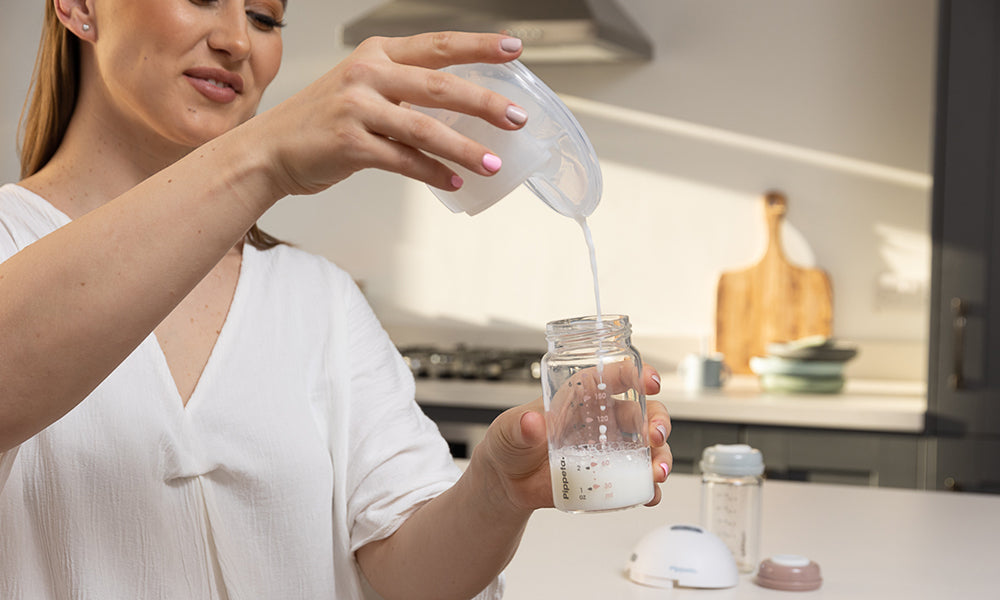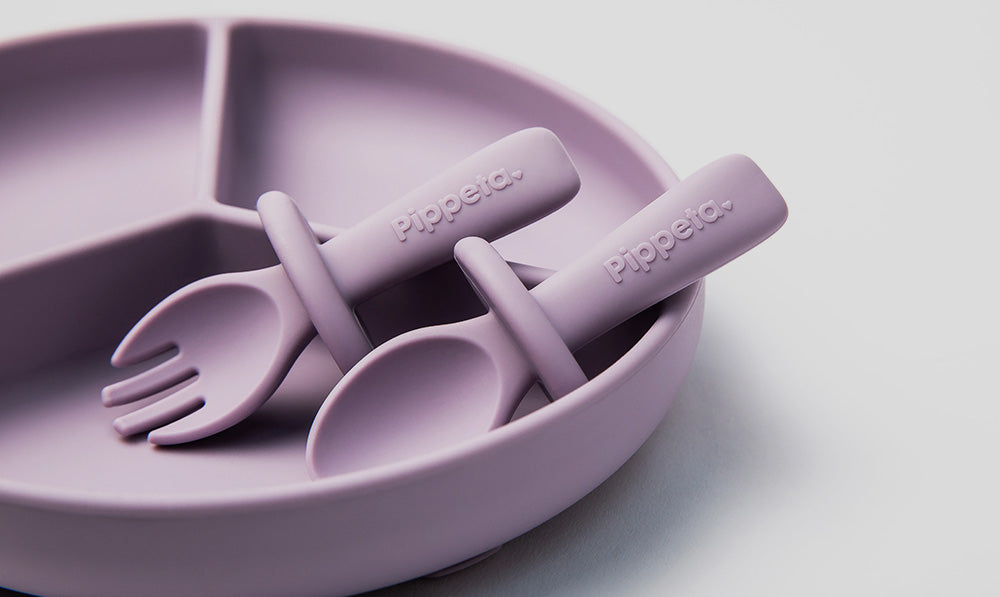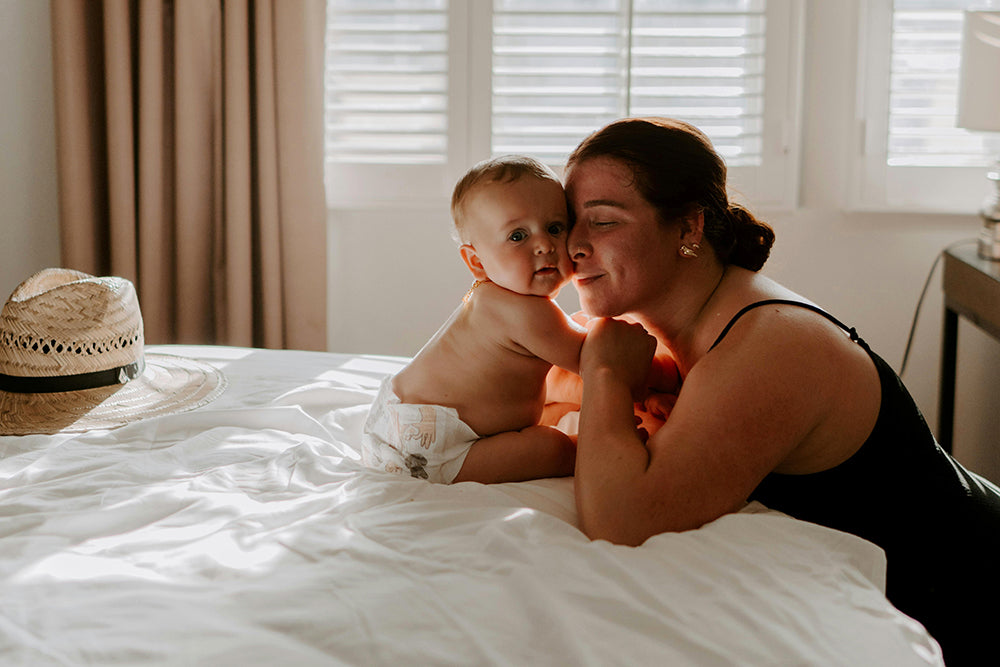In this blog post, we'll walk you through a step-by-step guide on how to sterilise a breast pump effectively. Sterilising means the breast pump has been cleaned thoroughly from germs and bacteria. Maintaining proper hygiene when using a breast pump is essential for the health and well-being of both you and your baby. Regularly sterilising your hands-free breast pump equipment helps eliminate harmful bacteria and ensures a safe feeding environment.

Why You Need To Sterilise Breast Pumps
Babies immune systems are not fully developed when they're born. It gets stronger and stronger as they get older. Babies are more susceptible to harmful bacteria and viruses, and proper care must be taken to minimise the risk of them falling ill.
Using a breast pump as often as you will means that hundreds of millimetres of breast milk will be travelling through the entirety of your breast pump every day. Breast milk is a nutrient-rich food source that can support the growth of bacteria. If bacteria are not removed from breast pump parts, they can multiply and contaminate the milk. This can make your baby sick.

How Often Should You Sterilise A Breast Pump?
You should sterilise your breast pump parts after each use, or at the very least, once a day. This is especially important if you are using the parts to store or feed expressed milk. You should also sterilise your breast pump parts before using them for the first time and before using them again after they have been stored for a long period of time.
- Shop Our Range of Breast Milk Storage Bags
How To Sterilise A Breast Pump
There are several ways to sterilise a breast pump. One common method is to boil the parts in a pot of water for 5 minutes. Another method is to use a steam steriliser, which you can buy separately, or as part of a complete baby bottle feeding set. You can also use a microwave steriliser or a cold water steriliser.
If you are not using our award-winning Pippeta hands-free breast pump, be sure to follow the manufacturer's instructions for sterilising your breast pump. Some parts may not be dishwasher safe or may require special sterilisation instructions. Let’s move on to the step-by-step guide on how to sterilise a breast pump.
- Shop Our Selection of Award-Winning Hands-Free Breast Pumps Here
Materials Needed
- Breast pump parts (flanges, valves, breast pump tubing, membranes, bottles)
- A clean basin or sink
- Mild dish soap
- Clean water
- A bottle brush or dedicated pump cleaning brush
- Sterilising method of your choice (steam steriliser, boiling water, microwave sterilisation bags, or chemical sterilising solution)
Step 1: Wash Your Hands
Before handling any of the breast pump equipment, thoroughly wash your hands with warm, soapy water. Also, use a disinfectant wipe or spray around the area in which you'll be cleaning. This helps minimise the introduction of any unwanted bacteria during the sterilisation process.
Step 2: Completely Disassemble the Breast Pump
Take apart all the components of your breast pump, including the flanges, valves, membranes, bottles, and any other detachable parts. Refer to the breast pump manufacturer's instructions for specific guidance on disassembly.
Step 3: Initial Rinse with Warm Water
Rinse all the parts with warm water to remove any residual breast milk or debris. A gentle rinse helps prepare the equipment for the cleaning process.
Step 4: Wash with Mild Dish Soap
Using mild dish soap and a bottle brush or pump cleaning brush, thoroughly clean each component. Pay close attention to crevices and hard-to-reach areas where milk residue can accumulate. Rinse well with clean water to remove any soap residue.
Step 5: Choose Your Sterilisation Method
There are several methods you can use to sterilise your breast pump equipment. Here are four common options:
- Steam Sterilisation: This involves using a specialised electric steam steriliser. Follow the manufacturer's instructions for your specific model.
- Boiling Water: Place all the disassembled pump parts in a pan of boiling hot water. Ensure that all parts are completely submerged and boil for at least five minutes. Use clean tongs to remove the parts and let them air dry on a clean towel.
- Microwave Sterilisation Bags: These specially designed bags are convenient and easy to use. Simply place the cleaned pump parts in the bag, add water as directed, and microwave according to the instructions on the bag.
- Chemical Sterilising Solution: Use a non-toxic, baby-safe sterilising solution (like Milton) and follow the manufacturer's instructions for dilution and soaking time.
Step 6: Allow Parts to Air Dry
After sterilisation, place the cleaned parts on a clean cloth, towel or drying rack to air dry completely. Avoid using a cloth or paper towel, as these may introduce new bacteria.
Step 7: Reassemble and Store
Once completely dry, reassemble your breast pump and store it in a clean, covered container or resealable plastic bag until your next use.
Properly sterilising your breast pump is a crucial step in ensuring a safe feeding environment for your baby. By following these steps and choosing a method that works best for you, not only can maintain the hygiene of your breast pump, but you can also use this sterilising method for all of your baby's equipment, and provide the best possible care for your little one. Always consult your breast pump's manual for manufacturer-specific instructions and recommendations.
Pippeta: Supporting Your Baby’s Journey
We're an award-winning business, most recently earning a 'Made For Mums' award from Mumsnet for our hands-free breast pump. We’re on a mission to empower breastfeeding mothers and support them in continuing their breastfeeding journey.
We’re here to support and provide the best advice and breastfeeding products on the market. Along with this, we provide free shipping on orders over £50, a 1-year warranty on breast pumps, a 14-day free returns policy and we are rated excellent by our customers.















Leave a comment
This site is protected by hCaptcha and the hCaptcha Privacy Policy and Terms of Service apply.